The Year 2021 in Review
Speech and Audio News
 Last year we were able to complete the large-scale measurement campaign with our Mercedes Benz V Class. All data has now been post-processed and is available here alongside a detailed corpus documentation.
Last year we were able to complete the large-scale measurement campaign with our Mercedes Benz V Class. All data has now been post-processed and is available here alongside a detailed corpus documentation.
Our analyses of the effects of a speaker head rotation were able to progress significantly. Next to the degrading effect on unprocessed signals we were able show a degradation for pro-cessed/transmitted signals w.r.t. listening effort in stationary and w.r.t. listening quality in non-stationary scenarios. Furthermore, it was shown that with the knowledge of the instantaneous head rotation angle, the degradation can be algorithmically compensated to some extent. In a next step, these subjective analyses will be paired with instrumental assessment methods.
With respect to beamforming applications in vehicles, several multi-channel (fixed and adaptive) beamforming algorithms were implemented for in-car communication systems to improve the intelligibility of the observed speech signals. We are now improving the implemented beamforming algorithms by exploiting the estimated speaker head rotation to cluster the related microphones in ad-hoc array structures.
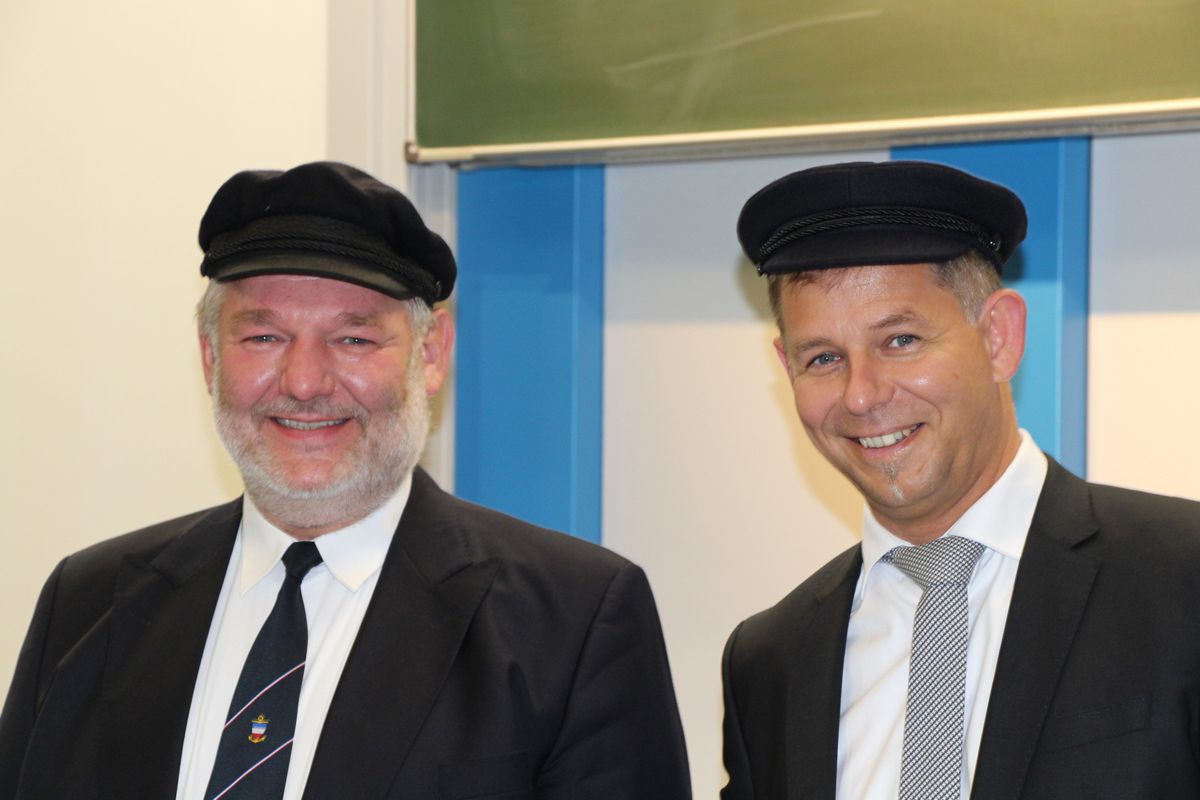 To investigate the topic of spatial playback inside vehicles, the previously implemented playback system in the V Class was used to conduct listening tests with respect to the perceived source positions. This data provides information on what simple playback systems in standard automotive set-tings can be capable of. Furthermore, this data will aid us in future experiments where we will in-vestigate the user preference in spatial voice calls. Additionally, we are also preparing methods to instrumentally determine the perceived sound source positions.
To investigate the topic of spatial playback inside vehicles, the previously implemented playback system in the V Class was used to conduct listening tests with respect to the perceived source positions. This data provides information on what simple playback systems in standard automotive set-tings can be capable of. Furthermore, this data will aid us in future experiments where we will in-vestigate the user preference in spatial voice calls. Additionally, we are also preparing methods to instrumentally determine the perceived sound source positions.
The acoustic environment simulation in KiRAT was extended even further. Specifically, a new module for local speech extraction was created. The module uses two different algorithms to reduce the ambient noise. An echo cancellation algorithm, adapted to the environment simulation system, removes the noise generated by the noise simulation and a subsequent noise suppression elimi-nates the residual noise. This extension of the environment simulation allows the analysis of, e.g., the Lombard effect.
We are also proud to have hosted the 14th ITG Conference on Speech Communication last autumn. Next to organizing a very successful conference we were also able to present four peer-reviewed conference papers at this prestigious event.
Medical News
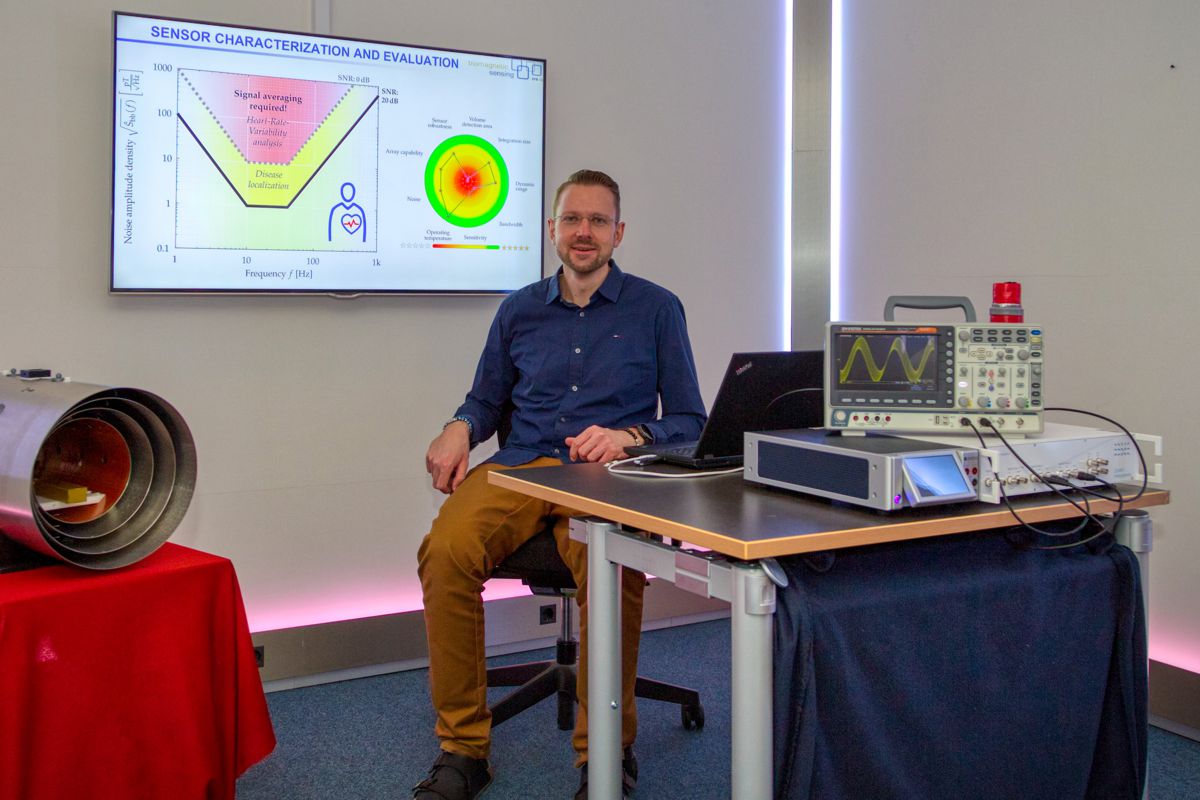 The medical team made some great progress for their own PhD theses and for the whole team during the last year.
The medical team made some great progress for their own PhD theses and for the whole team during the last year.
Eric finished his Ph.D. thesis this year and submitted it successfully in the middle of the year. Furthermore, he could already achieve first success in his new field of sensor evaluation for magnetoelectric sensors. We could already publish a first journal paper within a short time, freely available here. Unfortunately, the research proposal about the nerve analysis has been rejected by the DFG since one of the applicants could not participate due to illness.
Patricia submitted her first paper on the topic of real-time classification of tremor patients this year. In addition, tremor analysis in KiRAT has been advanced to such an extent that the first measurements in the UKSH are now possible with new sensor technology, new algorithms, and automatic classification. Sensors are used for this, which are fixed to the patient’s forearm as shown in the picture. In addition to the standard examination for tremor analysis, the sensors can also be used for other parts of the body to measure acceleration or muscle activity.
The topic of the regularity of a tremor was also very present for Patricia this year. Here, the connection between regularity, amplitude, frequency and the linear relationship between EMG and acceleration of the hand was analyzed in more detail. These results will be summarized in a paper, which will hopefully be submitted in the next few weeks.
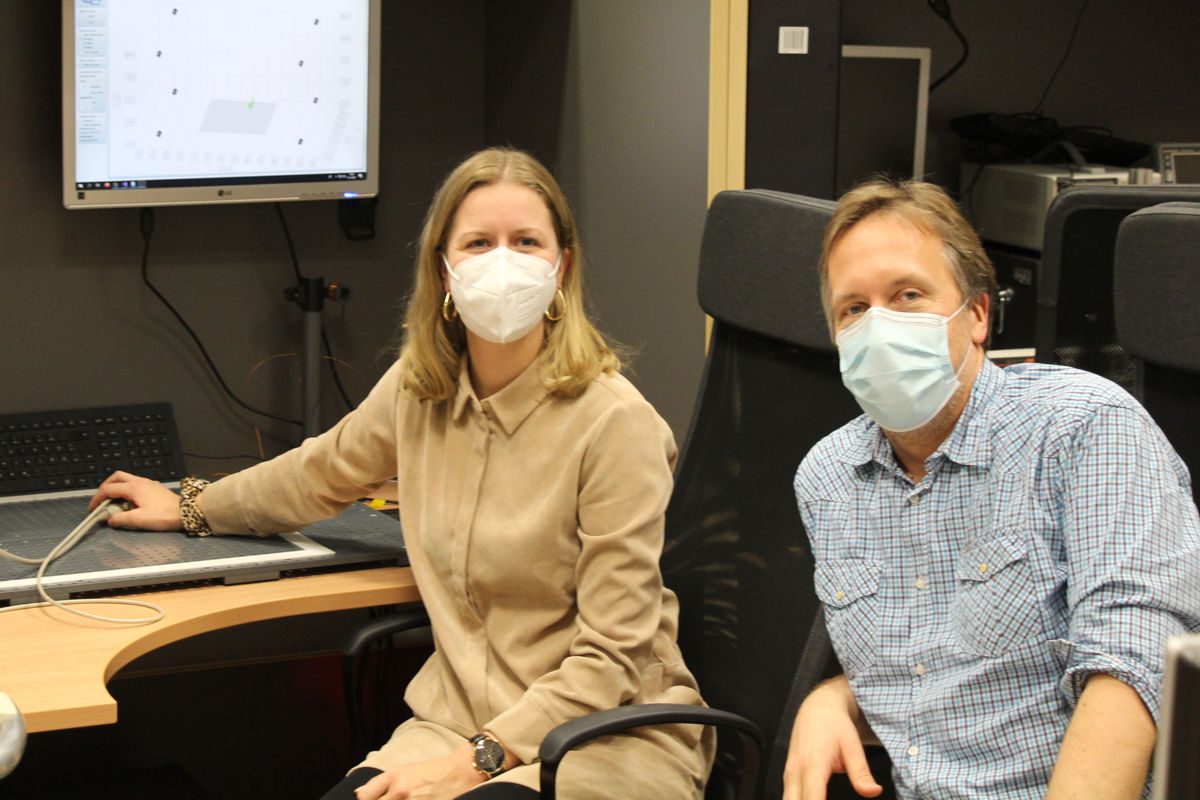 In the field of magnetic sensor localization, some successes were achieved this year. For example, a journal paper was published in the MDPI Special Issue on magnetoelectric sensors and the localization was extended to an application in 3D. Additionally, we started a cooperation with Prof. Dr. Robert Bergholz from the Pediatric Surgery department of the UKSH Kiel. We are looking forward to the cooperation and are excited about what the next year will bring.
In the field of magnetic sensor localization, some successes were achieved this year. For example, a journal paper was published in the MDPI Special Issue on magnetoelectric sensors and the localization was extended to an application in 3D. Additionally, we started a cooperation with Prof. Dr. Robert Bergholz from the Pediatric Surgery department of the UKSH Kiel. We are looking forward to the cooperation and are excited about what the next year will bring.
In our cardiology project, Erik has been working on three main topics this year: the magnetic forward simulation, a real-time Kalman-filter implementation, and the solution of the backwards problem. To estimate the current density distribution in the human heart, a mathematical description of the forward problem is required. Ultimately, this description should describe the measured electric and magnetic field. This year, Erik was able to implement the magnetic side of this simulation using a voxel-based heart model and the Biot-Savarts law. The simulations show that a Kalman filter is able to reconstruct the current densities from the magnetic measurements, even when significant noise is present. Since each voxel requires three system states in the state-space model and many voxels are needed to achieve relevant spatial resolution, a simple implementation of the Kalman filter is not real-time capable. The use of hardware-optimized matrix operation routines increases the number of possible system states, but still leaves room for improvement. The next step, which Erik is already working on, is to exploit the sparseness of the system matrix to further speed up the implementation. Speaking of system matrices, while the Kalman filter is capable of reconstructing the current densities, this is only true as long as the system matrix used is a good representation of the underlying system. With real patients, we have only a vague idea of what this system matrix might look like. This brings us to our final point - the backward problem. Initial experiments by Erik show that it is possible to optimize a system matrix by computing the gradients of a loss function propagated backwards through the Kalman filter. This has only been shown to work for very simple systems, but we are excited to see how this algorithm will perform on the voxel-based heart model.
At the beginning of the year Robbin published the results for detecting gait events (that is, initial foot contact and final foot contact) for different walking tasks, including straight-line walking, slalom walking, and walking while dual tasking. The paper is available here. The results showed a generally high sensitivity and precision (≥ 99%), although both dropped a little when detecting gait events during turns (sensitivity: ≥ 85%; precision: ≥ 95%). Continuing his work, Robbin implemented a new algorithm based on a convolutional neural network that uses dilated convolutions to exponentially increase the receptive field, in order to take advantage of the sequential structure of gait data. The algorithm is currently being evaluated against reference data obtained with an optical motion capture system. Furthermore, the data collected in the validation study led by Elke is being restructured according to the Brain Imaging Data Structure (BIDS) guidelines to facilitate the development of an algorithm pipeline to process the data and increases the reproducibility of our works.
SONAR News
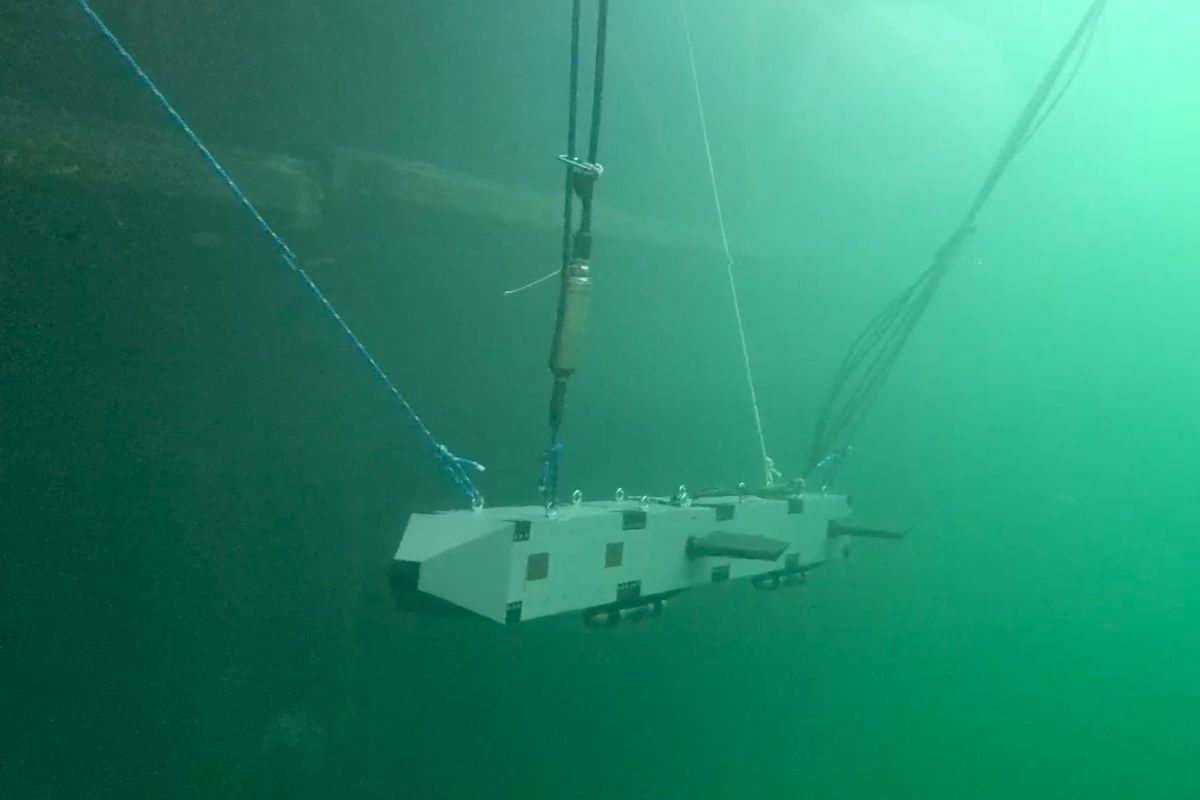 In the area of underwater signal processing, we also made the best of the difficult year and were able to carry out measurements in the Förde despite restrictions.
In the area of underwater signal processing, we also made the best of the difficult year and were able to carry out measurements in the Förde despite restrictions.
During the year, a simple towing body was manufactured in the workshop of the Technical Faculty. This created a mobile and flexible platform that can be attached and towed under the chair-owned boat CASSy. Thus, first measurements with a moving receiver system could be performed, representing an intermediate step between stationary measurements under ideal conditions in measuring tanks and the very extensive measurement runs of the WTD 71 with the towed body FLAME. In support of this, further hardware was purchased to equip this towed body with active position sensor technology, which will help to calibrate the measurement data of all modules according to their orientation and position.
In addition, measurements with the novel thin-film hydrophones were carried out in the local Kieler Förde. For this purpose, two small arrays were attached to the outer hull of the towed body and connected to the signal processing hardware on CASSy. This was followed by initial experience with moving hydrophones, which are necessary for analyzing flow-induced noise.
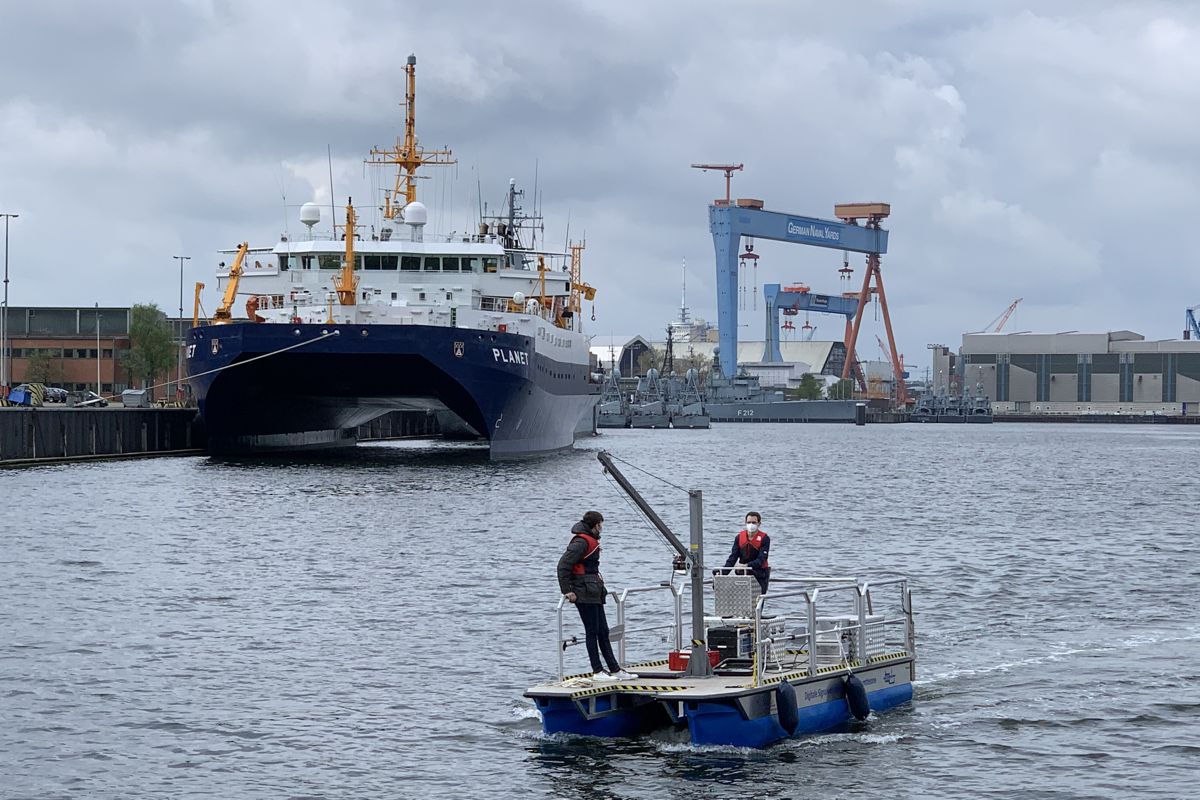 In the area of underwater communications, progress was made on many levels during the year. A new mixed analog-digital transmission method was tested promisingly on two measurement dates. In this process, voice signals are split into two components and transmitted in parallel. The transmission to our boat CASSy was also investigated. The transmission method was presented at the ITG Conference 2021. The JANUS protocol was also implemented in our KiRAT. This is the first open standard for digital underwater communication. This was done in the context of a bachelor thesis and allows comparative measurements to a standard used in practice.
In the area of underwater communications, progress was made on many levels during the year. A new mixed analog-digital transmission method was tested promisingly on two measurement dates. In this process, voice signals are split into two components and transmitted in parallel. The transmission to our boat CASSy was also investigated. The transmission method was presented at the ITG Conference 2021. The JANUS protocol was also implemented in our KiRAT. This is the first open standard for digital underwater communication. This was done in the context of a bachelor thesis and allows comparative measurements to a standard used in practice.
The algorithms implemented in KiRAT for controlling the SONAR hardware and for generating and evaluating the target position map were extensively adapted last year and tested in various measurements. The goal of the restructuring was not only the more efficient use of computing capacities to maximize the final resolution, but also a focus on the one hand on the operation of spatially distributed SONAR hardware - i.e. multistatic and multidynamic setups - and on the other hand on the optimized real-time parameterizability of the software to provide an interface for cognitive approaches - for example neural networks.
Finally, Alexei Namenas left the Sonar team this year. He has contributed a lot to the success of our team. We wish him good luck in his private and professional life (he still remains faithful to underwater signal processing) and of course remain on friendly terms.
Outreach
Due to the pandemic our activities with respect to outreach were still reduced. Several talks were presented in schools and unfortunately, several events had to be postponed to the summer of next year. Here, we really hope, that the pandemic will be such that outreach events will be allowed again.
Some Numbers
-
This year the number of publications was just the same as in 2020 - we published seven journals and six conference papers.
-
Comparted to 2020 we are able to increase again the number of bachelor and master theses. 12 theses were started in 2021: eight bachelor theses and four master theses.
-
In terms of doctoral degrees we had an "empty" year. None of the PhD students finished theses. However, currently a couple of people nearly ready with their work.
Our "GaS Club"
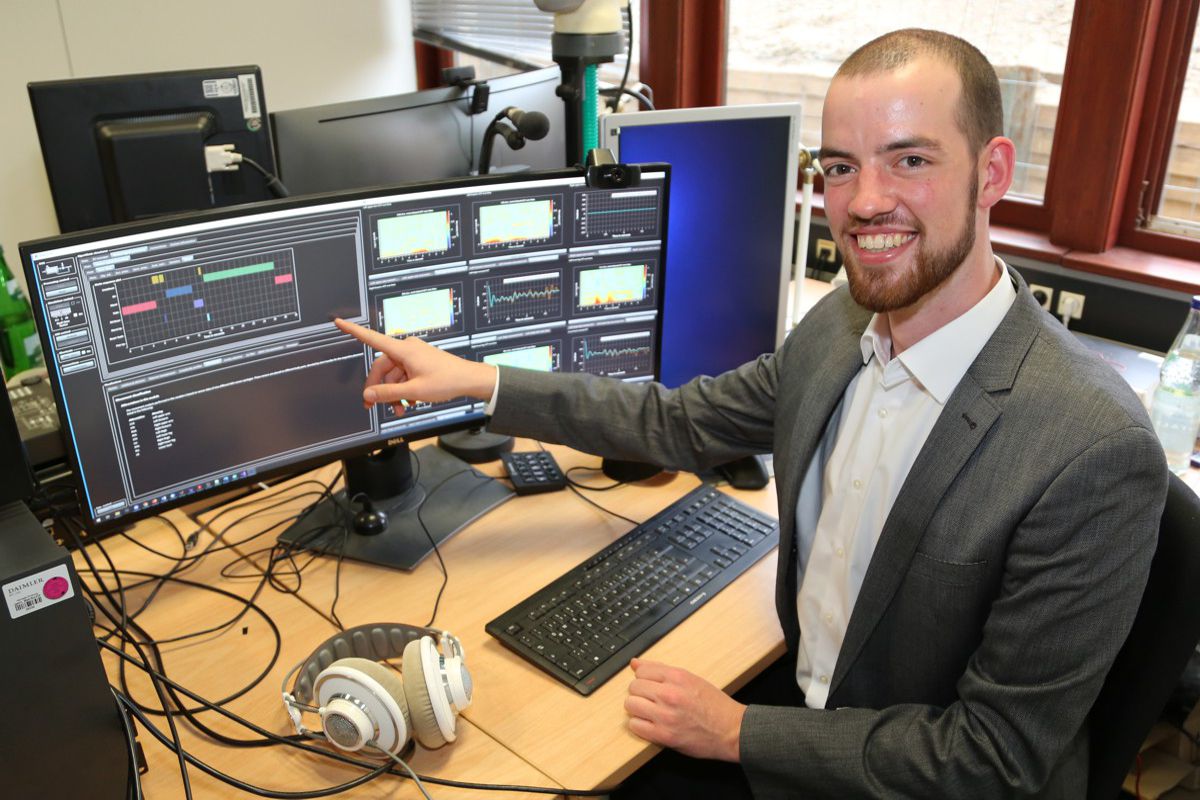 The "Gesellschaft für angewandte Signalverarbeitung" (GAS) currently have 40 supporting members and two companies.
The "Gesellschaft für angewandte Signalverarbeitung" (GAS) currently have 40 supporting members and two companies.
The society annually awards the best thesis in the field of digital signal processing and system theory. Particular attention is paid to scientific and technical claim and the practical relevance of the work. The complete DSS-Group evaluates the student’s commitment, their ability to work multidisciplinary and in a team. Moritz Boueke got the prize with his bachelor thesis “Human Movement Classification Using IMUs in Real-time“. More information can be found here.
We are looking forward to the new year 2022 we hope that all our members stay safe and healthy during the pandemic. Regardless the challenging times, we will continue to do our best to pursue the goals of our society and make the best possible use of our resources and your membership fees.
Some Pictures from 2021
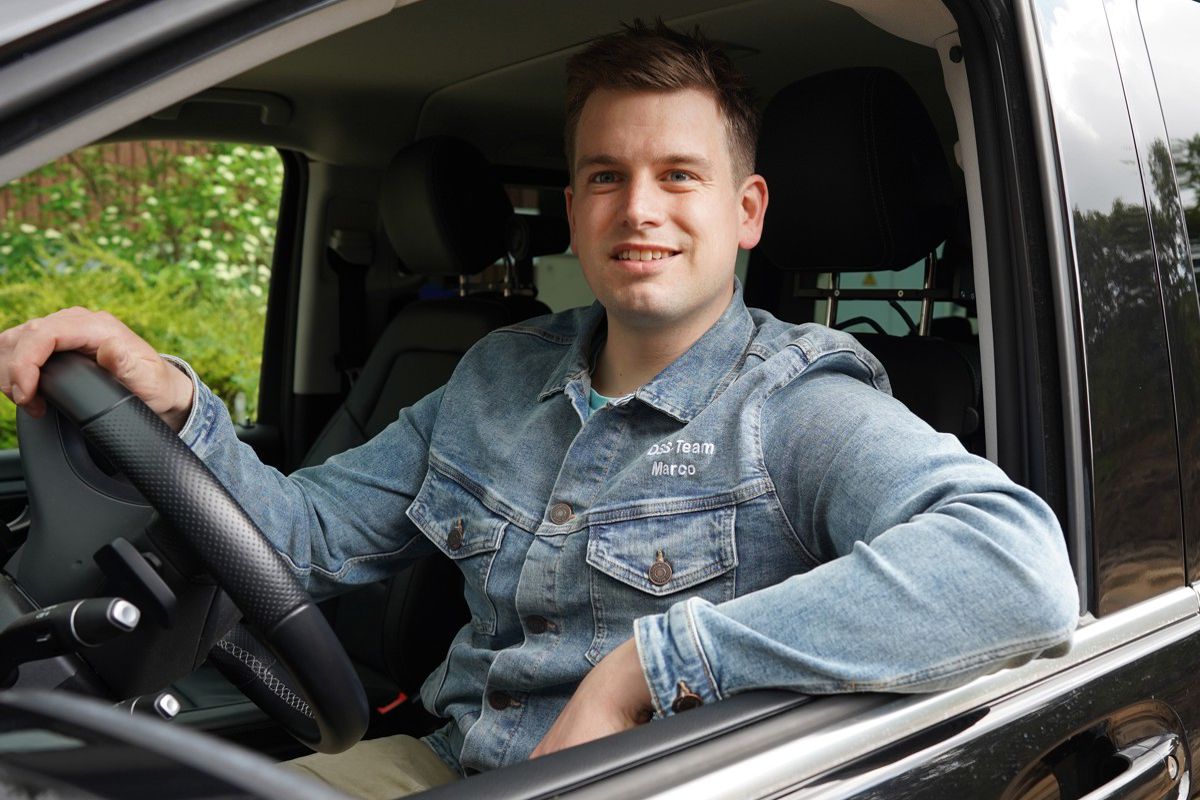 |
 |
|
|---|---|---|
| Marco after finishing the "transition" of our V class ... | Bastion "on tour" with our Karoline Gussow and Janne List ... | |
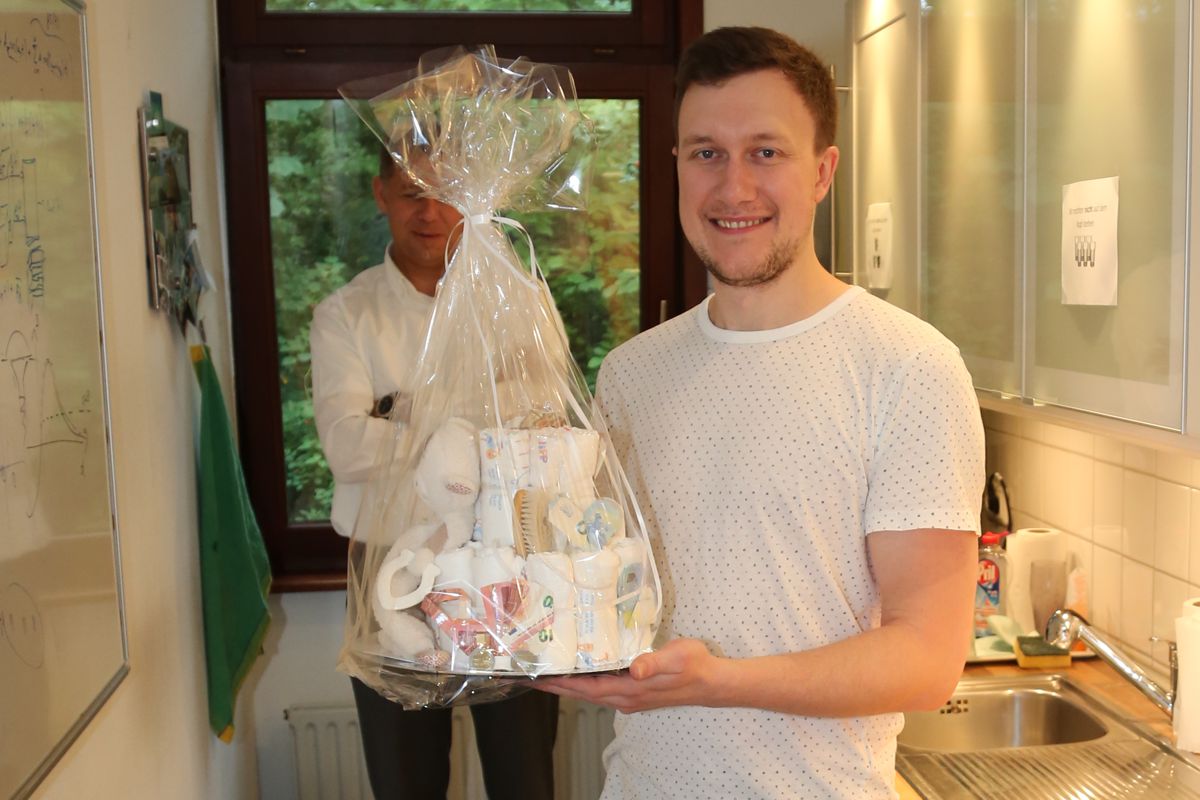 |
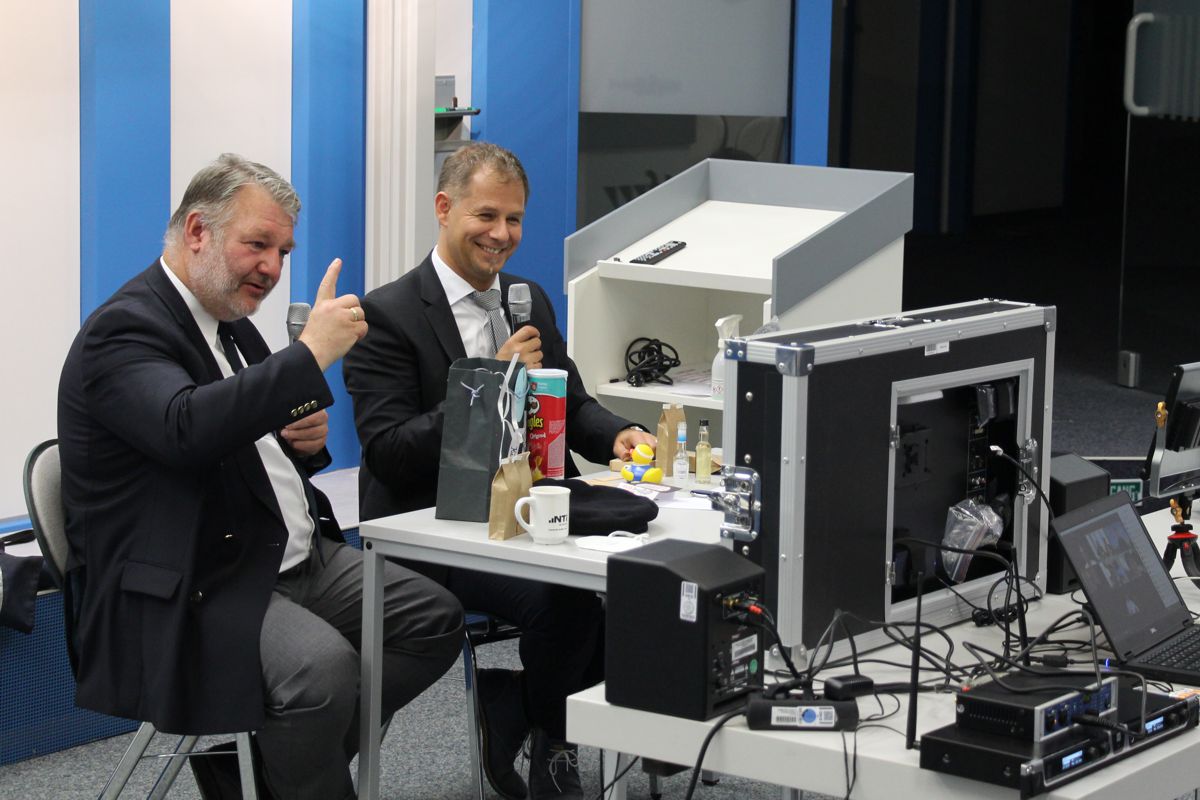 |
|
| Anton had a productive time during the pandmic ... | Kiel evening (online) at the ITG conference ... | |
 |
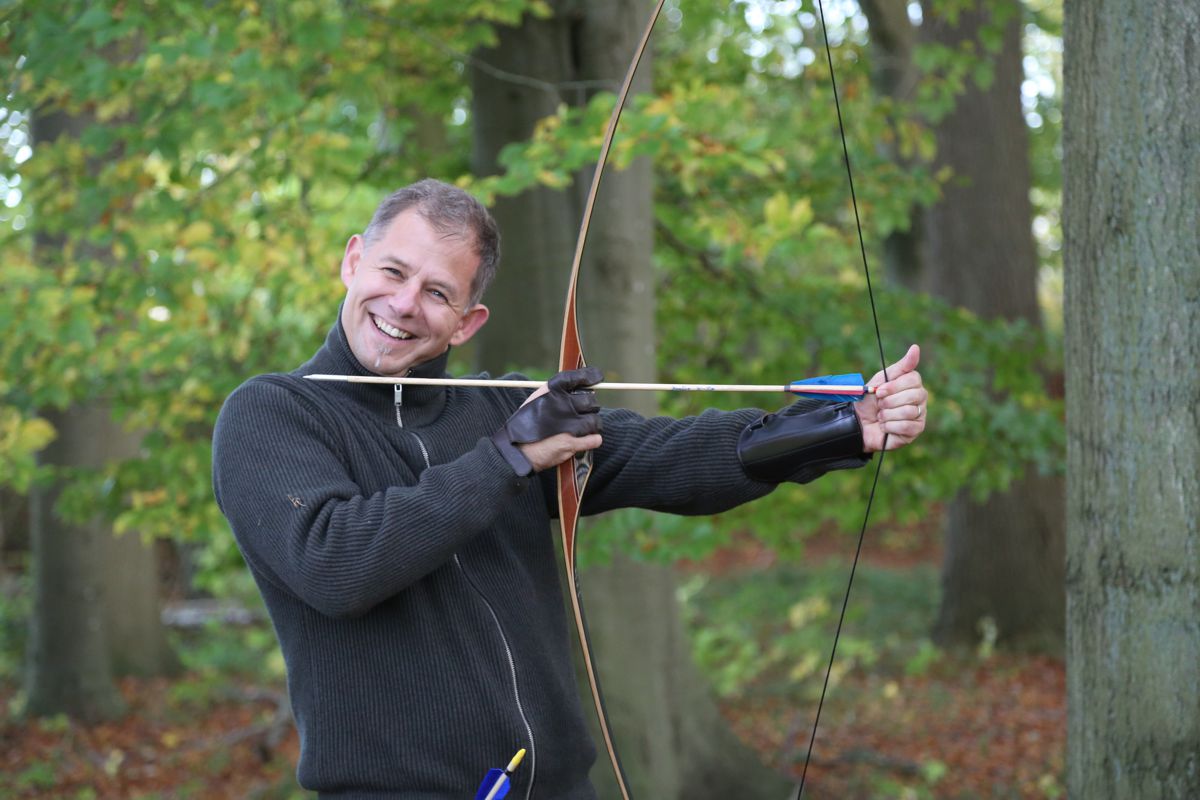 |
|
| Sunset while being on tour with CASSy ... | Our event "bowfire" ... |

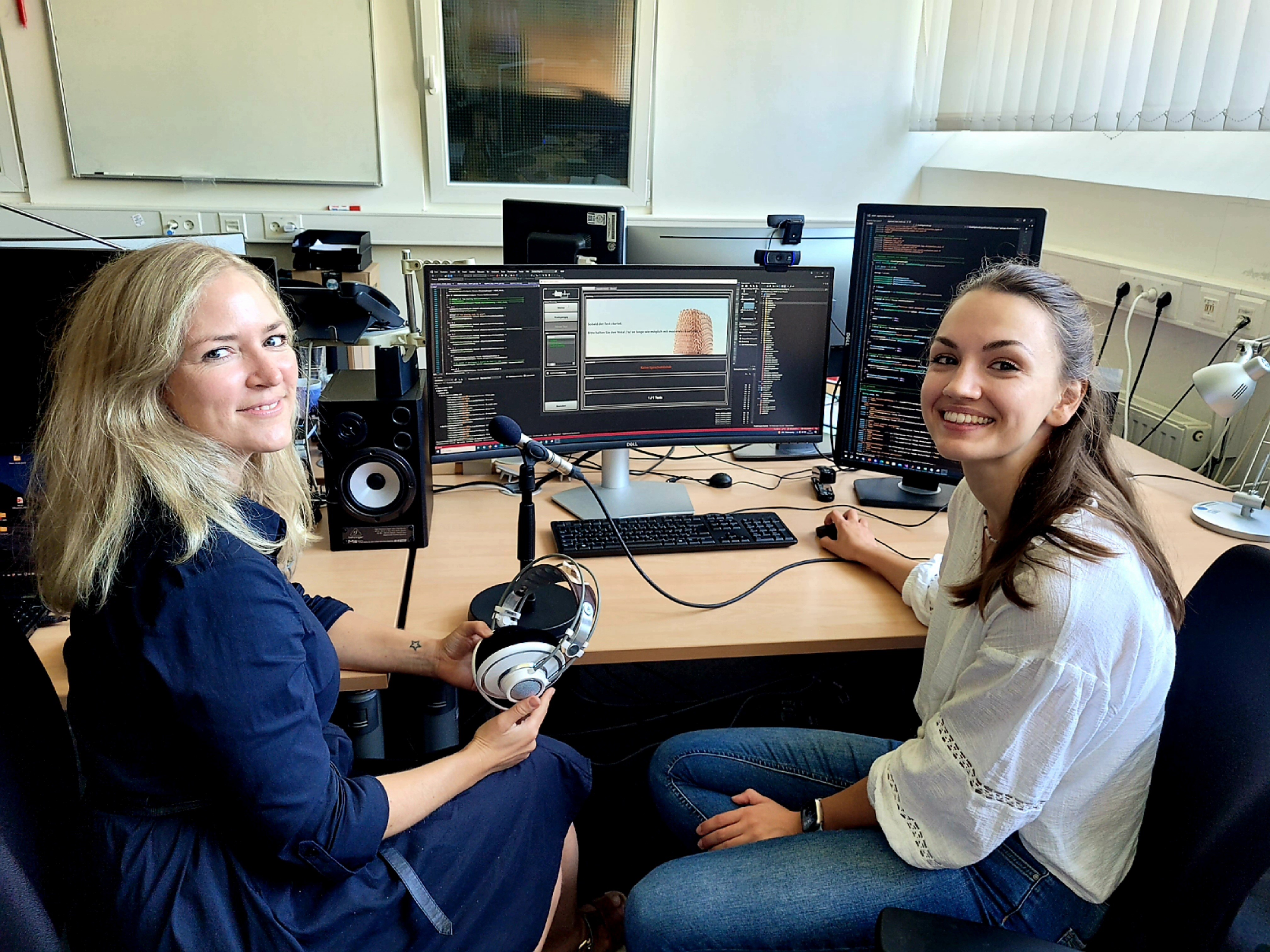 In the first week of September, we were delighted to host Dr.
In the first week of September, we were delighted to host Dr.